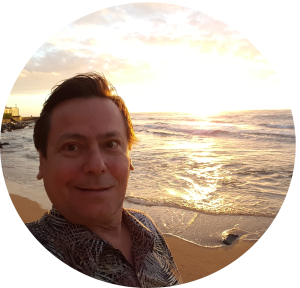Healing Light Yoga and Massage
Menu
Price List
Book Online
Steve J Davis, Healing Light Yoga and Massage
Bio and CV of Steve J Davis, RYT, LMT, BCTMB, NCBTMB APCE, CPP, FAA Remote Pilot sUAS, DTM
Healing Light Yoga and Massage Price List, Studio Policy, and Waiver updated 25 August 2024
We care about your privacy!
HIPAA regulatory standards in one document. 115 pages. current as of March 2013. This is an unofficial version that presents all the HIPAA regulatory standards in one document. The official version of all federal regulations is published in the Code of Federal Regulations (CFR).
View the official versions at 45 C.F.R. Part 160, Part 162, and Part 164.
REFERRED TO:
Steve J. Davis, RYT, LMT, BCTMB
Founder and Owner, Healing Light Yoga and Massage
By Appointment Only.
Phone (503) 724-2755, Fax (503) 200-1276
Located in the heart of Hollywood, at 4036 NE Sandy Blvd., Suite 204, Portland, OR 97212
- Creator: Present Moment Program, Assessment of Posture and Musculoskeletal Balance Course, Ethics for the Professional Massage Therapist and Bodyworker, Cultural Competency for the Professional Massage Therapist and Bodyworker and All Healthcare and Wellness Professionals.
- Registered Yoga Teacher, Licensed Massage Therapist.
- Board Certified in Therapeutic Massage and Bodywork.
- 50+ years experience.
healinglight.info
steve.davis@healinglight.info
YA #29243, OBMT #13099, BCTMB #512195-6, NPI #1124359088, NCBTMB Approved Provider #1122.
“Steve Davis is approved by the National Certification Board for Therapeutic Massage & Bodywork (NCBTMB) as a continuing education Approved Provider and is also sponsored by NCBTMB to teach New York LMTs continuing education that is accepted by the State of New York for license renewal.”
Here is a quote from me. Remember that you cannot fool a yogi.
PRESCRIPTION/LETTER OF REFERRAL (8 pages, download PDF file)
THE FOLLOWING PRESCRIBED TREATMENT IS MEDICALLY NECESSARY
About NCBTMB
The National Certification Board for Therapeutic Massage & Bodywork (NCBTMB) is an independent, private, nonprofit organization founded in 1992. The mission of NCBTMB is to define and advance the highest standards in the massage therapy and bodywork profession. In support of this mission, NCBTMB serves the profession through Board Certification, Specialty Certificates, an Approved Provider Program, and an Assigned School Code Program. For more information, please visit www.ncbtmb.org.
NCBTMB Approved Provider Code of Ethics
NCBTMB Approved Provider Standards of Practice
For Clients
Healing Light Present Moment Program, Assessment of Posture and Musculoskeletal Balance.
Free initial consultation. You can book online immediately. Please see our Studio Policy, and forms.
Healing Light Yoga and Massage Price List, Studio Policy, and Waiver updated 25 August 2024
My Studio Policy can be summed up in 3 points.
Do No Harm
Safety
Results
Steve Davis, RYT, LMT, BCTMB: What I do is help people to increase accurate perception, memory, straighten their bodies, and come into neutral posture, through my Present Moment Program.
Goals and Benefits. Attain and maintain Awareness, Alignment, Neutral Posture, Power of Performance, and Supreme Wellness.
Concepts. Awareness, Alignment, Balance, and Movement, leading to Power of Performance, Supreme Wellness.
Present Moment Program: Posture Assessment, Posture Photos, Gait Analysis, Movement Analysis, Healing Light Kata Instruction, Focused Massage Therapy (optional).
Progress is measured by baseline comparison through photos and video of each session, using the plumb line photos as a baseline comparison, and also to see movement documented through the videos of each session. In addition, you can learn the Healing Light Kata much faster by being able to see the videos of each session.
The Healing Light Kata is a form that I have developed over many years of dedicated work. Kata means form in the Japanese language. Healing Light means the light and healing power of the Sun.
It is a fusion of Yoga, Supreme Ultimate Fist, and Posture Exercises that I have invented, refined and polished into a diamond state over many years. Supreme Ultimate Fist is also known as T’ai Chi Ch’uan.
The Healing Light Kata is designed to bring a person into neutral posture and awareness of the gravity line, for optimal efficiency in balance, alignment, movement, all functions of performance, wellness, and especially to increase accurate perception and memory, in line with the Present Moment Program goals.
The Focused Massage Therapy is recommended, and it will help you to progress much faster, than without it.
There are 3 Tracks.
Track 1 documents each session with photos and video. You will have your own private, password-protected access point to view the photos and videos of your sessions.
Costs and Session times
Track 1. Road to Awareness, Alignment, Balance, Movement, Neutral Posture, Power of Performance, and Supreme Wellness, one step at a time.
Best Option for Learning and Fast Progress.
Recommend 6 Sessions, then reassess progress.
2 to 3 hours per Session are recommended for most Clients.
Photos and HD Video. Posture Photos, Gait Analysis, Healing Light Kata, S.O.A.P. Charting Notes.
An illustrated PDF book of your Sessions is built with the S.O.A.P. Charting Notes and instructions as given in each Session.
The illustrated PDF book with links to the private videos of the Sessions are intended for you to learn about yourself, with valuable life tools, taught specifically for you personally, and for you to keep for future reference.
Uploaded within 24 hours of each Session to private access point.
Time of each Session: 60 minutes, 75 minutes, 90 minutes, 2 hours, 2.5 hours, 3 hours.
Number of Sessions in initial Treatment Plan: 6.
Cost per Session:
- 60 minutes: $240.
- 75 minutes: $300.
- 90 minutes: $360.
- 2 hours: $480.
- 2.5 hours: $600.
- 3 hours: $720.
Cost for 6 sessions: $1,440 to $4,320, depending on length of Session.
6 Sessions at 2 hours per Session; total cost: $2,880.
Frequency of sessions. Recommend once per week.
Sessions can be scheduled every day, depending on availability in the schedule. Homework will be given.
PROGRAM: Present Moment Program, Posture Assessment, Posture Photos, Gait Analysis, Movement Analysis, Healing Light Kata instruction, Focused Massage Therapy (optional), S.O.A.P. Charting Notes, illustrated PDF book of your Sessions. Private, password-protected access point to show progress in attaining goals of the Treatment Plan. We will reassess the Treatment Plan every session.
GOALS. Attain and maintain Awareness, Alignment, Balance, Movement, Neutral Posture, Power of Performance, and Supreme Wellness.
My Studio Policy can be summed up in 3 points.
Do No Harm
Safety
Results
Please read and sign the Healing Light Yoga and Massage Price List, Studio Policy, and Waiver updated 25 August 2024
Reservation Policy: Payment is due at the time of the reservation, or upon arrival. Please be on time. Everyone’s time is important. 24 hour notice is required to change appointment time, unless you are having an emergency.
Missed appointments will be charged at full rate. If you are late for your appointment, we will still have to end the session at the allotted time.
Refund Policy: Refunds will be given for all unused sessions, with at least 24 hour notice.
Best regards, Namaste!
Track 2. Road to Awareness, Alignment, Balance, Movement, Neutral Posture, Power of Performance, and Supreme Wellness, one step at a time.
For those on a budget.
Recommend 6 Sessions, then reassess progress.
2 to 3 hours per Session are recommended for most Clients.
Priced at $120 per studio hour.
No video, no photos, no private web page, no illustrated PDF book.
Same session times as Track 1.
Number of Sessions in initial Treatment Plan: 6.
Frequency of sessions. Recommend once per week.
GOALS. Attain and maintain Awareness, Alignment, Balance, Movement, Neutral Posture, Power of Performance, and Supreme Wellness.
My Studio Policy can be summed up in 3 points.
Do No Harm
Safety
Results
Please read and sign the Healing Light Yoga and Massage Price List, Studio Policy, and Waiver updated 25 August 2024
Track 3 is medical massage, billed to your insurance company.
Bio and CV of Steve J Davis, RYT, LMT, BCTMB, NCBTMB APCE, CPP, FAA Remote Pilot sUAS, DTM
Posture Provides Clue for Future Disability
Apr. 8, 2013 — The shape of an individual’s spinal column may predict his or her risk for nursing home admission or need of home assistance in old age, according to a new article published online in the Journals of Gerontology Series A: Biological Sciences and Medical Sciences.
From the study:
“A team of researchers based in Japan discovered that the trunk angle of inclination — the angle between the true vertical and a straight line from the first thoracic vertebra to the first sacral vertebra (view image) — is associated with becoming dependent on help for activities of daily living (ADL). These activities include such basic self-care tasks as bathing, feeding, toileting, maintaining continence, dressing, and transferring in or out of a bed or chair.
“Spinal posture changes with age, but accumulated evidence shows that good spinal posture is important in allowed the aged to maintain independent lives,” the authors state.”
===
Comment: The angle they discovered that is critical to future dependence in ADL is in the Sagittal Plane. This is one of the reasons why I have focused my work in posture. There are many more reasons. Steve
===
“The research team’s data were sourced from 804 participants in the Kurabuchi Study, a community-based prospective cohort study of residents aged 65 years or older in Kurabuchi Town, approximately 62 miles (100 kilometers) north of Tokyo.
The test subjects’ spinal posture was measured with a spinal mouse, which is a computer-assisted noninvasive device for measuring spinal shape. The device is guided along the midline of the spine, starting at the spinous process and finishing at the top of the anal crease.
Of the four spinal measurements taken by the device, only trunk angle of inclination was associated with future dependence in ADL — defined by the researchers as either admission to a nursing home or need of home assistance after a 4.5 year follow-up period. At that time, 15.7 percent became dependent in ADL, 7.6 percent died, and 0.7 percent moved out of the town. The group was 58 percent female.
The subjects in the highest quartiles, who had the greatest angle of spinal inclination, were 3.47 times more likely to become dependent in ADL than those in the lowest quartiles (the group with the least spinal inclination), even after adjusting covariates such as age, sex, back pain, and stiffness.
The authors’ research was supported by a grant in aid from the Japanese Ministry of Health, Labor, and Welfare. The article in which their work appeared is titled “Spinal Posture in the Sagittal Plane Is Associated with Future Dependence in Activities of Daily Living: A Community-Based Cohort Study of Older Adults in Japan.”

